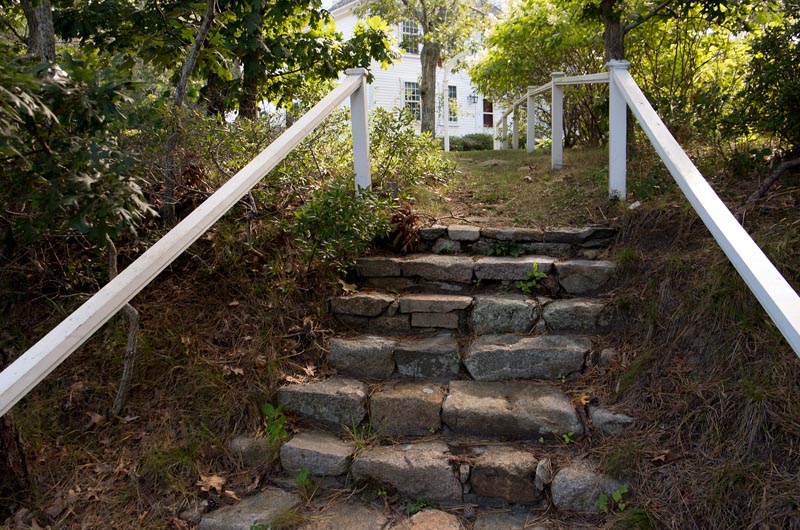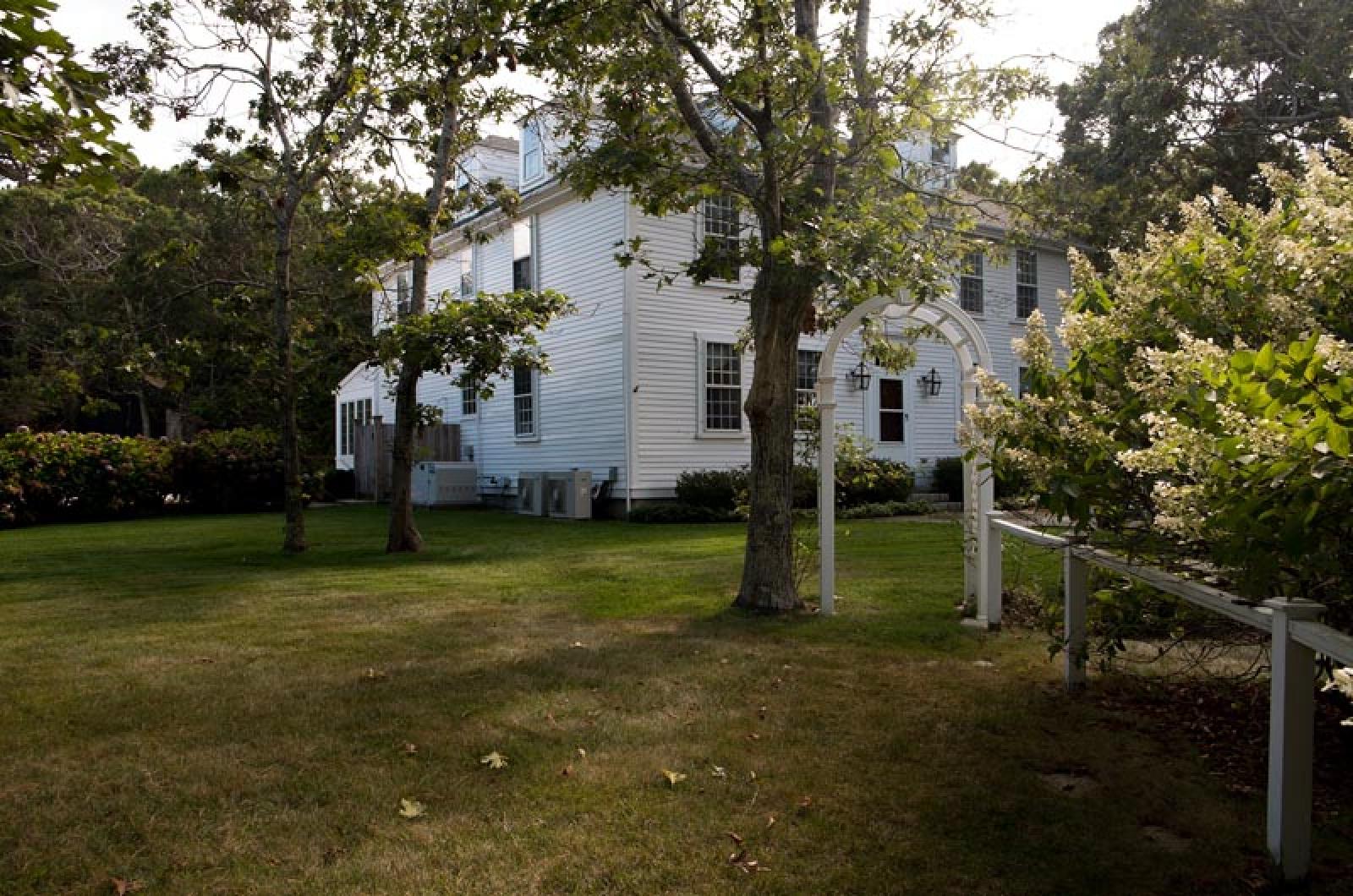Beach street in Vineyard Haven is not very appealing to the incoming traveler. It is still a working waterfront, and this may always be its destiny. We need working waterfronts. They still serve a real purpose in our lives. Vineyard Haven has had coal yards, boat yards, salt works, warehouses and wharves along its protected harbor. Main street had its tannery and stables nearby. It had taverns and a life along the waterfront that people don’t remember much these days. But it also had some lovely houses, some of which were destroyed in the fire of 1883.
One of the loveliest and oldest to survive the fire was the Chase House, built around 1728 by Abraham Chase. It was a tavern for over a hundred years, and stood where the town parking lot is, right beside the present day Stop and Shop. It came to be known as The Great House. Abraham Chase was the largest landowner in Tisbury. He owned more than a thousand acres of land, four houses (including his father’s homestead at West Chop) and four African American slaves. (They were not the only slaves found on the Vineyard in that era; we know about them through the probate inventories of their owners.) An old Gazette article names two of the slaves: Violet and Petro. Thankful Smith, one of the 19th century owners of the Great House, told stories about these people who lived in the basement of the house. Abraham Chase died in 1763, long before slavery was outlawed in Massachusetts. His widow Mercy remarried and became known in town as Granny Winston. She is supposed to have haunted the house after her death.

The home’s Georgian lines, hip roof and balanced windows were quite sophisticated for the time. The houses in the William street historic district are for the most part almost a hundred years younger than this house, and their general Federalist style is much more common on the Island. In light of that, it is a wonder that the house has been saved.
In 1923 the house was in sad shape. It was flaked (dismantled piece by piece) and then taken by Walter Flanders to its new home on Main street in West Chop. In James H.K. Norton’s book, Walking in Vineyard Haven, there are two pictures of the house, one for each location. The 1908 picture shows the house looking as if it needed more than just a coat of paint, with a cow grazing in the front yard. It has an English basement. The basement was needed as the house stood very close to the high tide mark, and was sometimes ravaged by wind and water. The second picture shows the house on its new lot at West Chop without the basement.
The deed of the actual house (not a usual occurrence) without any land attached reads: “A certain frame dwelling situated in said Tisbury on Water Street in the village of Vineyard Haven commonly known as the Great House. Including the building itself; all additions, chimneys etc., down to the foundation which is not conveyed. The grantee shall be permitted to leave said building on the land where it now is until March 19, 1923 at which time the grantee agrees to have the house and chimneys moved.”
The new location was more protected and also logical since West Chop was the location of Abraham Chase’s family homestead and most of his thousand acres. In 1798 the lane that led from the main area of town to the homestead at West Chop became Main street.
The Great House has been well preserved and has been owned by the same family since 1946. The person who had the foresight to realize the value of the house was Elizabeth H. Jackson, the daughter in law of Charles Jackson, who was one of the original trustees of the West Chop Trust. She rented the house out for many years before she sold it to the Trotter family, which owns it today.







Comments (1)
Comments
Comment policy »